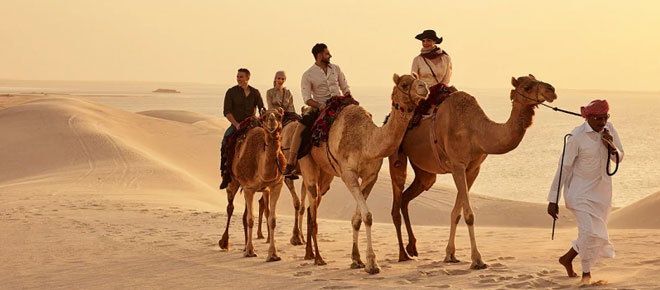10 best places in this world

Here is the ten highly regarded destinations known for their natural beauty, historical significance, cultural attractions, and unique experiences:
-
Paris, France: Known as the "City of Love," Paris offers iconic landmarks like the Eiffel Tower, Louvre Museum, Notre-Dame Cathedral, and charming neighborhoods like Montmartre.
-
Rome, Italy: The Eternal City is filled with ancient ruins, including the Colosseum and Roman Forum, as well as religious sites like the Vatican City and St. Peter's Basilica.
-
Machu Picchu, Peru: This ancient Incan city, situated amidst the Andes Mountains, offers breathtaking views and a remarkable cultural experience.
-
Serengeti National Park, Tanzania: Known for its vast savannahs and incredible wildlife, the Serengeti is a top destination for safari adventures and witnessing the Great Migration.
-
Great Barrier Reef, Australia: The world's largest coral reef system, located off the coast of Queensland, offers unparalleled snorkeling and diving experiences among vibrant marine life.
-
Santorini, Greece: Famous for its white-washed buildings, blue-domed churches, and breathtaking sunsets, Santorini is a picturesque island in the Aegean Sea.
-
Kyoto, Japan: With its numerous temples, traditional gardens, and historic districts, Kyoto provides a glimpse into traditional Japanese culture and is particularly stunning during cherry blossom season.
-
Petra, Jordan: This ancient Nabatean city carved into rose-red sandstone cliffs is a UNESCO World Heritage site and an awe-inspiring archaeological wonder.
-
Grand Canyon, USA: Located in Arizona, the Grand Canyon is a magnificent natural wonder known for its vast size, colorful rock formations, and breathtaking vistas.
-
Bora Bora, French Polynesia: This tropical paradise in the South Pacific is famous for its turquoise lagoons, overwater bungalows, and pristine beaches
PARIS ,

Paris is the capital and largest city of France. It is located in the north-central part of the country, on the Seine River. Known as the "City of Light" (la Ville Lumière), Paris is renowned for its rich history, stunning architecture, world-class museums, and cultural attractions.
Here are some key facts about Paris:
-
Landmarks: Paris is famous for its iconic landmarks, including the Eiffel Tower, Notre-Dame Cathedral, Louvre Museum, Arc de Triomphe, Champs-Élysées, and the Palace of Versailles.
-
Culture: The city has a vibrant cultural scene, with numerous theaters, art galleries, and music venues. Paris is considered a global center for art, fashion, gastronomy, and literature.
-
Museums: The Louvre Museum is one of the world's largest and most visited museums, housing thousands of artworks, including the renowned Mona Lisa. Other notable museums in Paris include the Musée d'Orsay, Centre Pompidou, and Musée de l'Orangerie.
-
Cuisine: Paris is famous for its culinary delights. The city offers a wide range of restaurants, from Michelin-starred establishments to charming cafes and bistros. French cuisine, including dishes like croissants, baguettes, escargots, and coq au vin, is celebrated worldwide.
-
Parks and Gardens: Paris is known for its beautiful parks and gardens, providing green spaces for relaxation and recreation. The Luxembourg Gardens, Tuileries Garden, and Parc des Buttes-Chaumont are among the popular choices for both locals and visitors.
-
River Seine: The Seine River flows through the heart of Paris, dividing the city into the Left Bank (Rive Gauche) and Right Bank (Rive Droite). It is spanned by several picturesque bridges and is a popular spot for boat cruises and strolls along the riverbanks.
-
Fashion: Paris is a global fashion capital, hosting prestigious fashion events like Paris Fashion Week. The city is renowned for its luxury boutiques, designer brands, and haute couture houses.
-
UNESCO World Heritage Sites: Paris boasts several UNESCO World Heritage Sites, including the banks of the Seine, Montmartre, and the Palace of Versailles.
-
Transportation: Paris has an extensive public transportation system, including the metro, buses, and trains, making it easy to navigate the city and explore its various attractions.
-
Population: As of my knowledge cutoff in September 2021, the population of Paris was around 2.2 million people. However, the greater Paris metropolitan area, known as the Île-de-France region, has a population of over 12 million, making it one of the most populous urban areas in Europe.
Please note that some information, such as population figures, may have changed since my last update in September 2021.
MALDIVES,

The Maldives is a tropical paradise located in the Indian Ocean, southwest of Sri Lanka. It is an archipelago consisting of 26 coral atolls, which are made up of more than 1,000 islands. The Maldives is known for its stunning white sandy beaches, crystal-clear turquoise waters, and abundant marine life, making it a popular destination for honeymooners, divers, and beach lovers.
Here are some key points about the Maldives:
Geography: The Maldives is the smallest Asian country in both land area and population. It covers an area of about 298 square kilometers (115 square miles) and has a population of approximately 540,000 people. The capital and largest city is Malé, located on the island of the same name.
Tourism: Tourism is the backbone of the Maldivian economy. The country's picturesque landscapes and luxury resorts attract millions of visitors each year. Tourism activities mainly revolve around water sports, scuba diving, snorkeling, fishing, and relaxation on the stunning beaches.
Climate: The Maldives has a tropical monsoon climate with two distinct seasons: the dry season (northeast monsoon) from November to April and the wet season (southwest monsoon) from May to October. The temperature remains fairly constant throughout the year, ranging from 25 to 31 degrees Celsius (77 to 88 degrees Fahrenheit).
Culture: The Maldives has a rich cultural heritage influenced by its geographical location and the historical interactions with various civilizations, including Arab, Indian, and African cultures. Islam is the official religion of the country, and the Maldives is known for its unique blend of Islamic traditions and local customs.
Environmental concerns: The Maldives faces challenges due to climate change and rising sea levels. The low-lying islands are particularly vulnerable to the effects of climate change, including coastal erosion and coral reef degradation. The government and international organizations are working to address these issues and promote sustainability.
Transportation: Most visitors to the Maldives arrive at Malé International Airport, which serves as the main gateway to the country. Once in the Maldives, transportation between islands is typically done by domestic flights or speedboats. Seaplanes are also used to reach some of the remote resort islands.
Language: Dhivehi is the official language of the Maldives. English is widely spoken in tourist areas and is often used as a medium of communication in resorts, hotels, and businesses.
The Maldives offers a unique and tranquil experience for those seeking a tropical getaway with pristine beaches, vibrant coral reefs, and a relaxing atmosphere.
THAILAND,

Thailand, officially known as the Kingdom of Thailand, is a country located in Southeast Asia. Here are some key points about Thailand:
-
Geography: Thailand is bordered by Myanmar (Burma) to the northwest, Laos to the northeast, Cambodia to the southeast, and Malaysia to the south. It also has coastlines along the Gulf of Thailand and the Andaman Sea. The country's terrain is diverse, featuring mountains, plains, and plateaus.
-
Capital and Major Cities: The capital city of Thailand is Bangkok, which is also the country's largest city. Other major cities include Chiang Mai, Phuket, Pattaya, and Ayutthaya.
-
Population: Thailand has a population of over 69 million people, making it the 20th most populous country in the world. The majority of the population is ethnic Thai, with various ethnic minorities residing in different regions of the country.
-
Language: The official language of Thailand is Thai, and it is spoken by the majority of the population. English is also widely spoken, especially in tourist areas and among the younger generation.
-
Religion: Buddhism is the dominant religion in Thailand, with over 90% of the population practicing Theravada Buddhism. There are also significant Muslim, Christian, and Hindu communities in the country.
-
Culture and Traditions: Thailand has a rich cultural heritage influenced by its history, religion, and ethnic diversity. The country is known for its distinctive architecture, intricate temples (such as Wat Arun and Wat Phra Kaew), vibrant festivals (such as Songkran and Loy Krathong), traditional music and dance (like the classical dance form Khon), and Thai cuisine (including dishes like pad Thai and green curry).
-
Tourism: Thailand is a popular tourist destination, attracting millions of visitors each year. Travelers are drawn to its beautiful beaches, tropical islands (like Phuket, Koh Phi Phi, and Koh Samui), historical sites, bustling markets, vibrant nightlife, and welcoming hospitality.
-
Economy: Thailand has a diverse economy, with key sectors including tourism, manufacturing (particularly electronics and automotive industries), agriculture (rice, rubber, and seafood), and exports. The country has experienced significant economic growth in recent decades.
-
Government: Thailand is a constitutional monarchy, with King Maha Vajiralongkorn currently reigning as the monarch. The country has experienced political changes and transitions over the years.
It's important to note that this information is based on the knowledge available up until September 2021, and there may have been some developments or changes since then.
CHINA,

China, officially known as the People's Republic of China, is a country located in East Asia. It is the world's most populous country, with a population of over 1.4 billion people. China has a rich history that dates back thousands of years, and it is one of the world's oldest continuous civilizations.
Here are some key points about China:
-
Geography: China is the third-largest country by land area, covering approximately 9.6 million square kilometers. It borders 14 countries and has a diverse landscape, including mountains, plains, deserts, and coastlines. The country is divided into 23 provinces, five autonomous regions, four direct-controlled municipalities (Beijing, Shanghai, Tianjin, and Chongqing), and two special administrative regions (Hong Kong and Macau).
-
Government and Politics: China is governed by the Communist Party of China (CPC), which has been in power since 1949. It follows a socialist system with Chinese characteristics. The country's President is the head of state, and the Premier is the head of government. The National People's Congress (NPC) is the highest organ of state power.
-
Economy: China has experienced rapid economic growth over the past few decades and has become the world's second-largest economy, after the United States. It has a mixed socialist market economy, with a combination of state-owned enterprises and private businesses. China is a major player in global trade and is known as the "world's factory" due to its manufacturing prowess. It is also one of the largest exporters and importers of goods and services.
-
Culture: Chinese culture is rich and diverse, shaped by its long history and various ethnic groups. It encompasses a wide range of traditions, art forms, literature, cuisine, and philosophies such as Confucianism and Taoism. The Chinese language, Mandarin, is the most widely spoken language in China, but there are also several other regional languages and dialects.
-
Technology and Innovation: China has made significant strides in technological advancements and innovation in recent years. It has a thriving tech industry and is home to several global technology companies, including Huawei, Alibaba, Tencent, and Xiaomi. The country has been investing heavily in areas such as artificial intelligence, 5G telecommunications, e-commerce, and renewable energy.
-
Social Issues: China faces various social challenges, including issues related to human rights, freedom of speech, censorship, and political dissent. The Chinese government exercises strict control over the media and internet, and there are restrictions on certain aspects of civil liberties. China has also faced criticism regarding its treatment of ethnic minorities, such as the Uyghur population in Xinjiang.
-
International Relations: China plays a significant role in global affairs and has been expanding its influence on the world stage. It is a permanent member of the United Nations Security Council and a member of various international organizations. China has engaged in territorial disputes, particularly in the South China Sea, and has been involved in initiatives like the Belt and Road Initiative, which aims to enhance connectivity and trade between Asia, Europe, and Africa.
It's important to note that China is a vast and complex country, and this summary only provides a broad overview. There are many more aspects to explore, including its history, traditions, regional differences, and ongoing developments in various fields.








